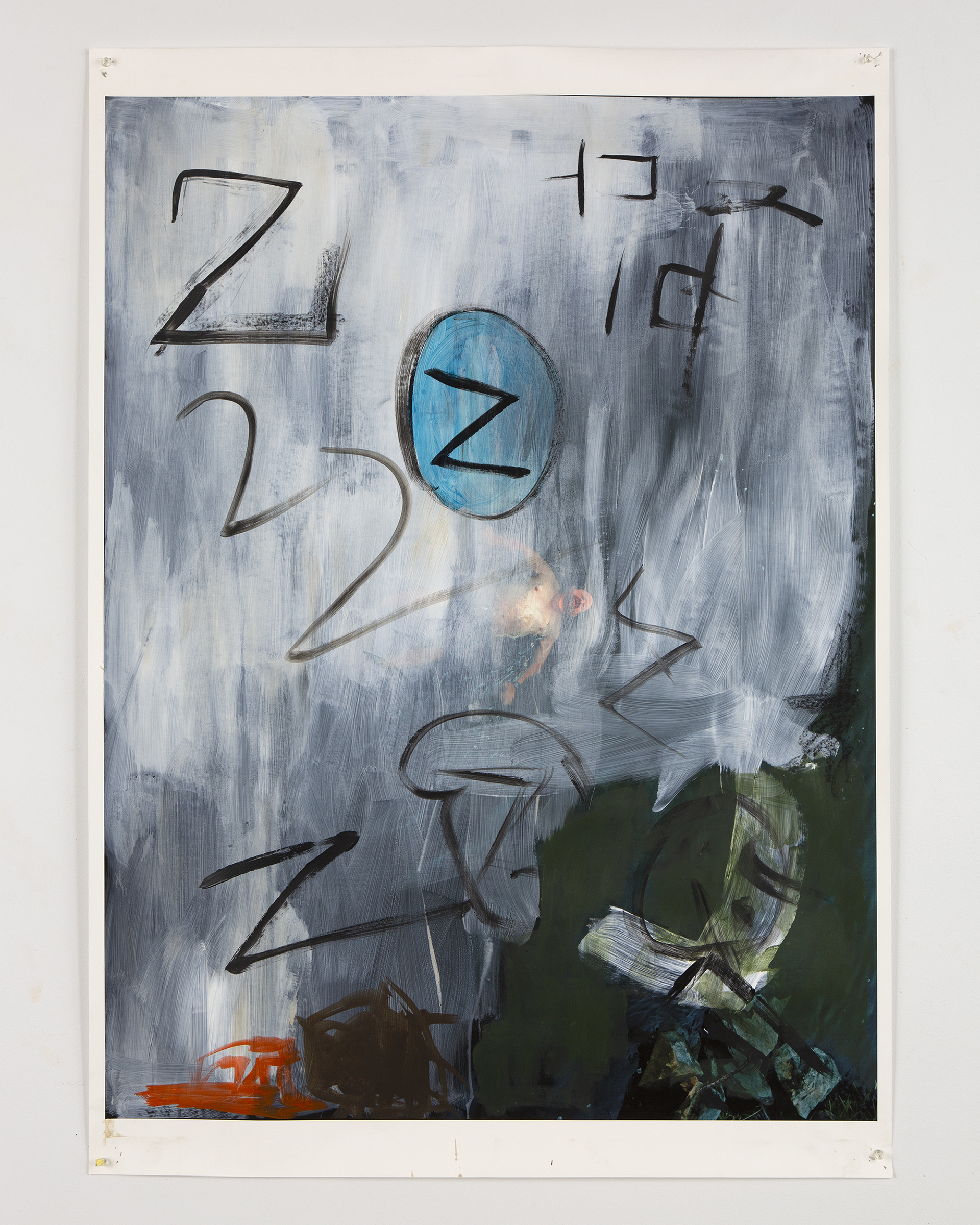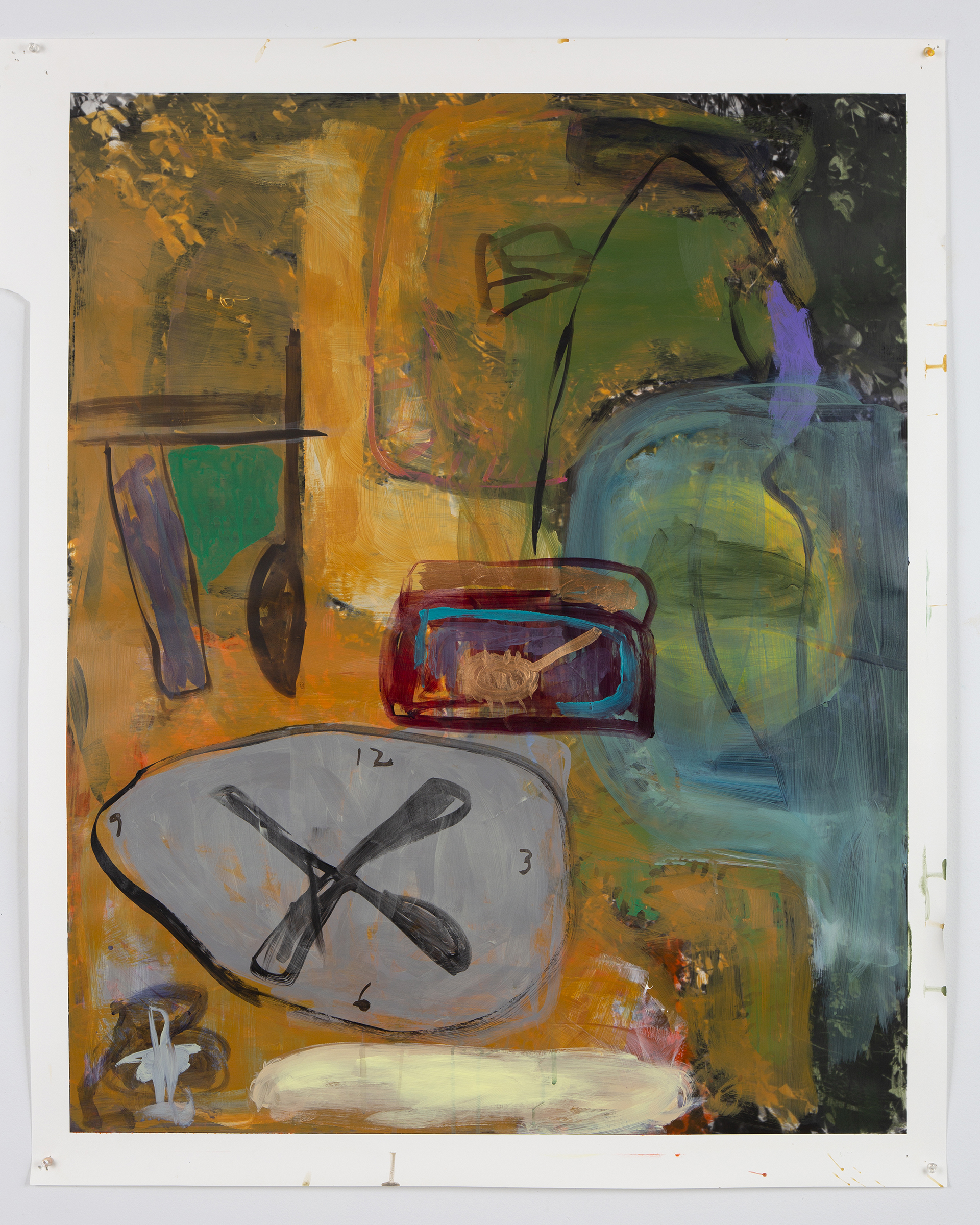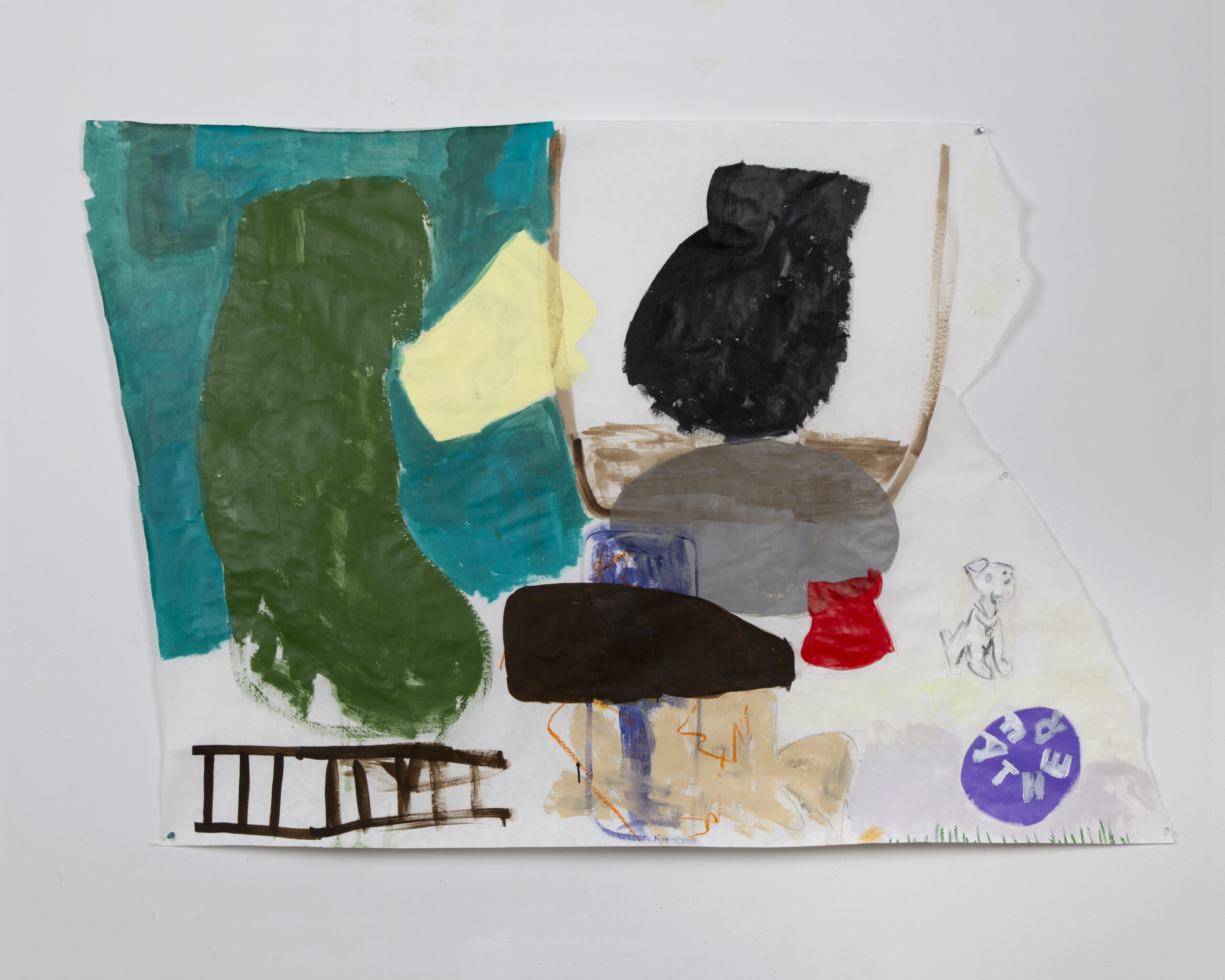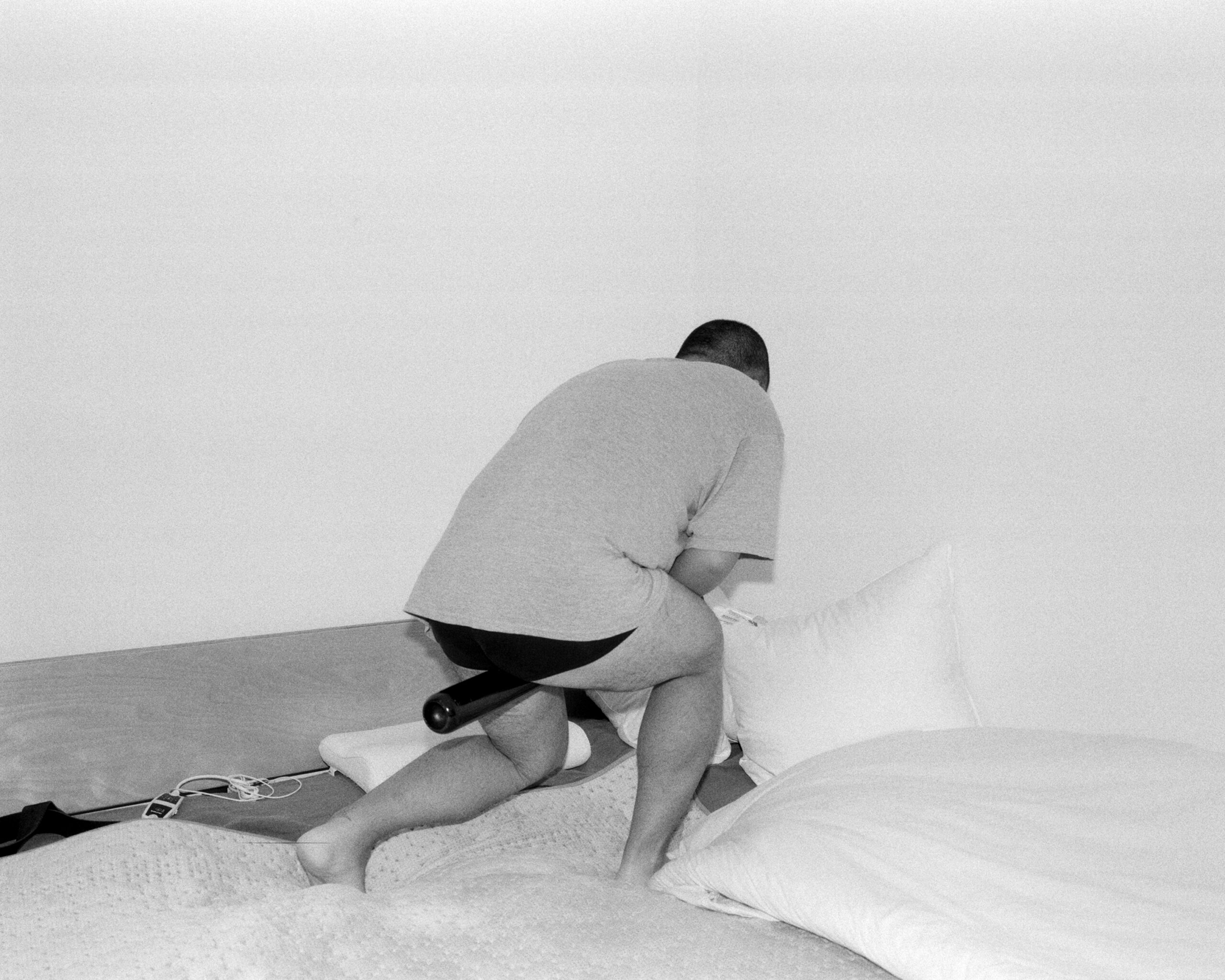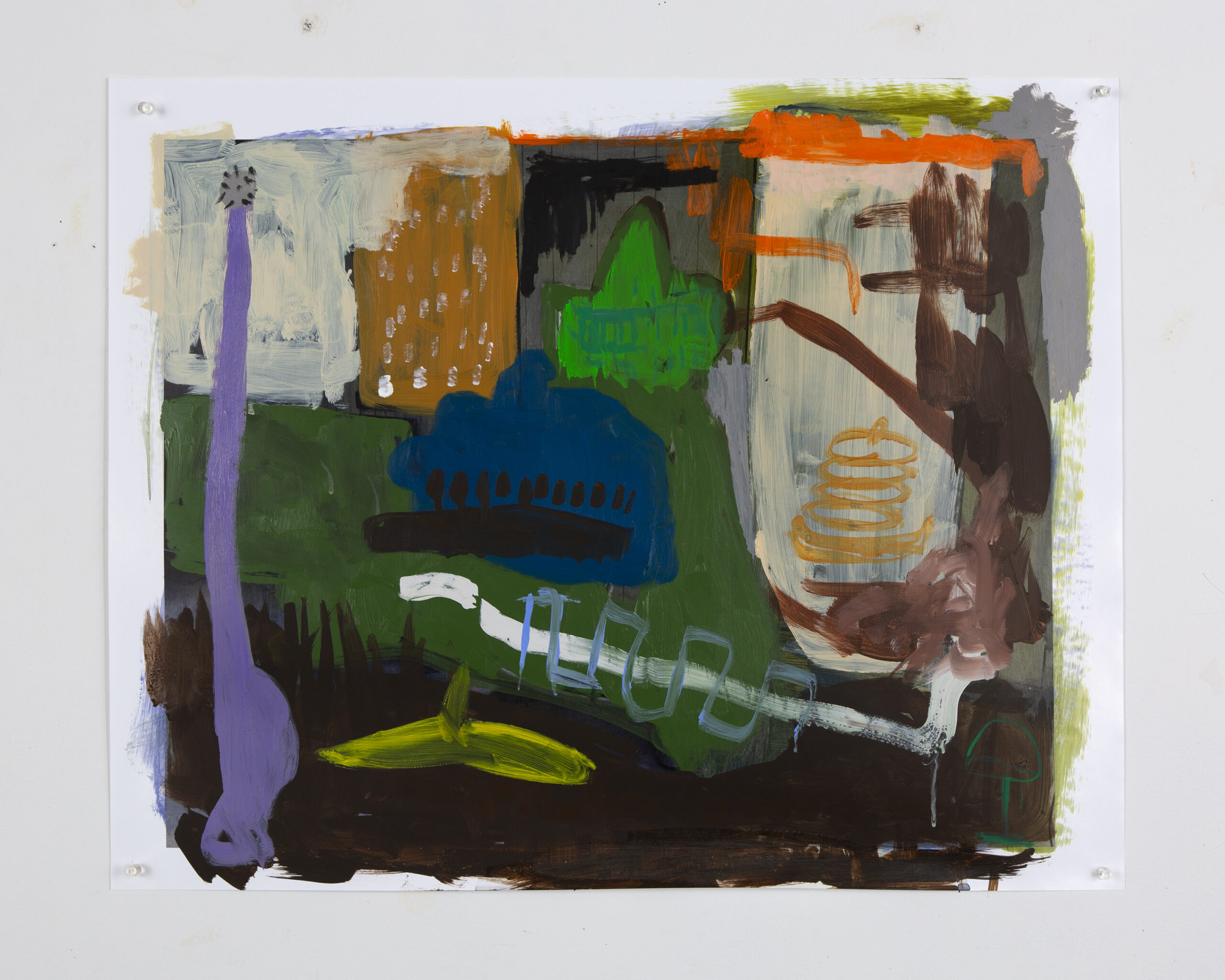A light in a brownstone window, the embracing warmth of a deep tub or an imagined garden, a full bowl, a chair to rest, familiar objects, the energy of companionship or tranquility of solitude.
Prattfolio asked several graduates of Pratt’s Fine Arts and Photography programs whose recent work evokes a spectrum of notions of home about their relationship with the space and the concept. Here is a selection of their work and their words.
Mirror of Memory
Bethanya Abebe, MFA Fine Arts ’21
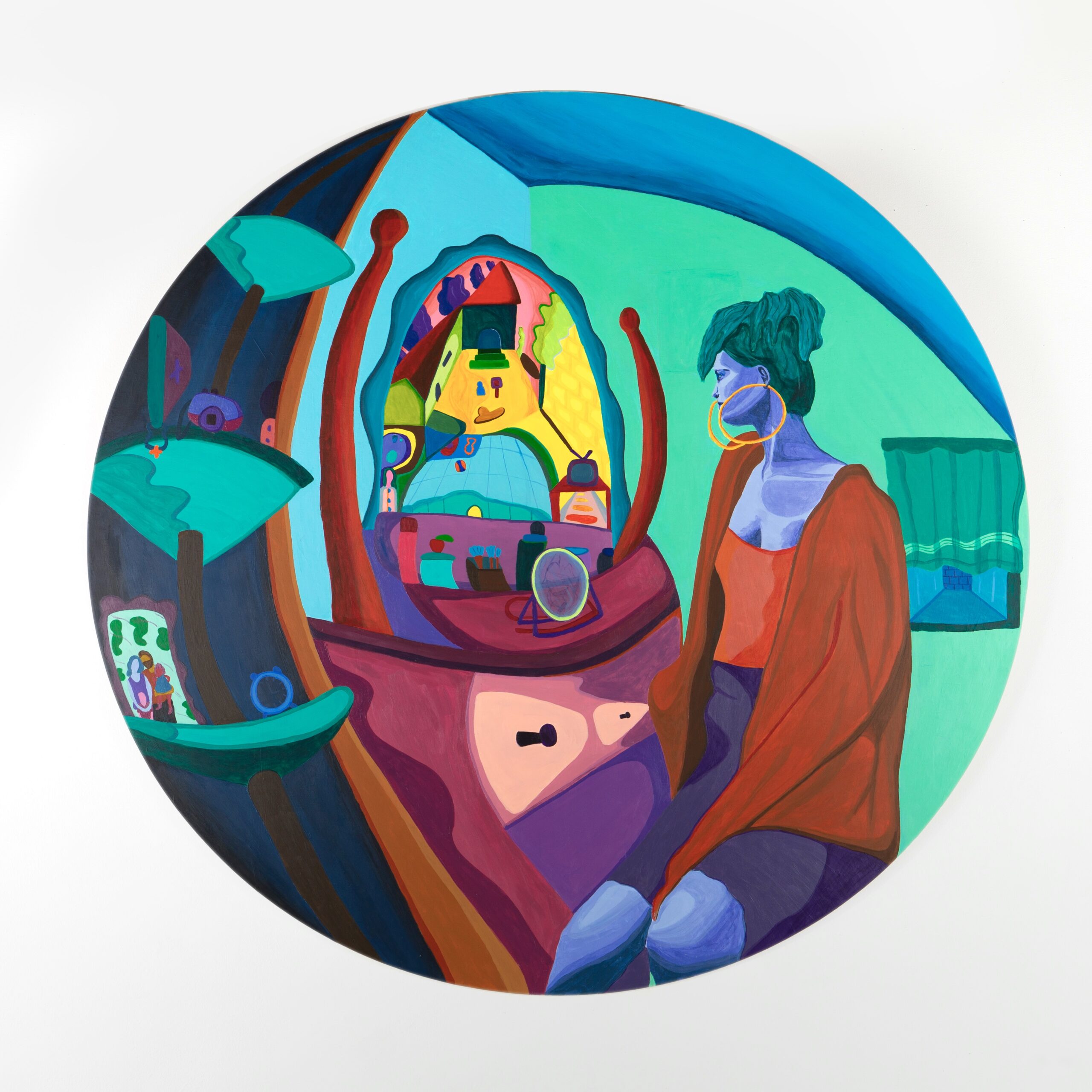
What is the significance of domestic space/home environments for you in your work? What has drawn you to these environments?
My work depicts my environment and daily life, and my home plays a significant role in that. My bedroom is a reflection of my mind. How I decide to decorate it, maintain it, and what I surround myself with daily mirrors who I am and how I think. While my home is personal, my environment is a shared space. Daily observations of my surroundings shape and influence my work. The mundane life, shapes of buildings, placement of objects and interactions of people (with other people or nature) inspires my work.
What are some sensations or ideas that define home—what do you imagine when you envision home—and how do those feelings or concepts relate to your approach to painting/art making?
Home can be interpreted in many ways. My idea of home is a safe and familiar space. My body is a home for my soul. My house is home for my body. My neighborhood is home for my house, and that continues. The more the space is a shared space, the less comfortable it is for me. However, the more time I spend in a space, the more familiar I feel, which can lead me to be more comfortable. I like to paint places that are familiar or places that I visit often. It allows me to study details that can build more on the story I am telling. Yet, unfamiliar spaces cause me to create concise paintings, which I also like, because they are not detailed and they create questions.
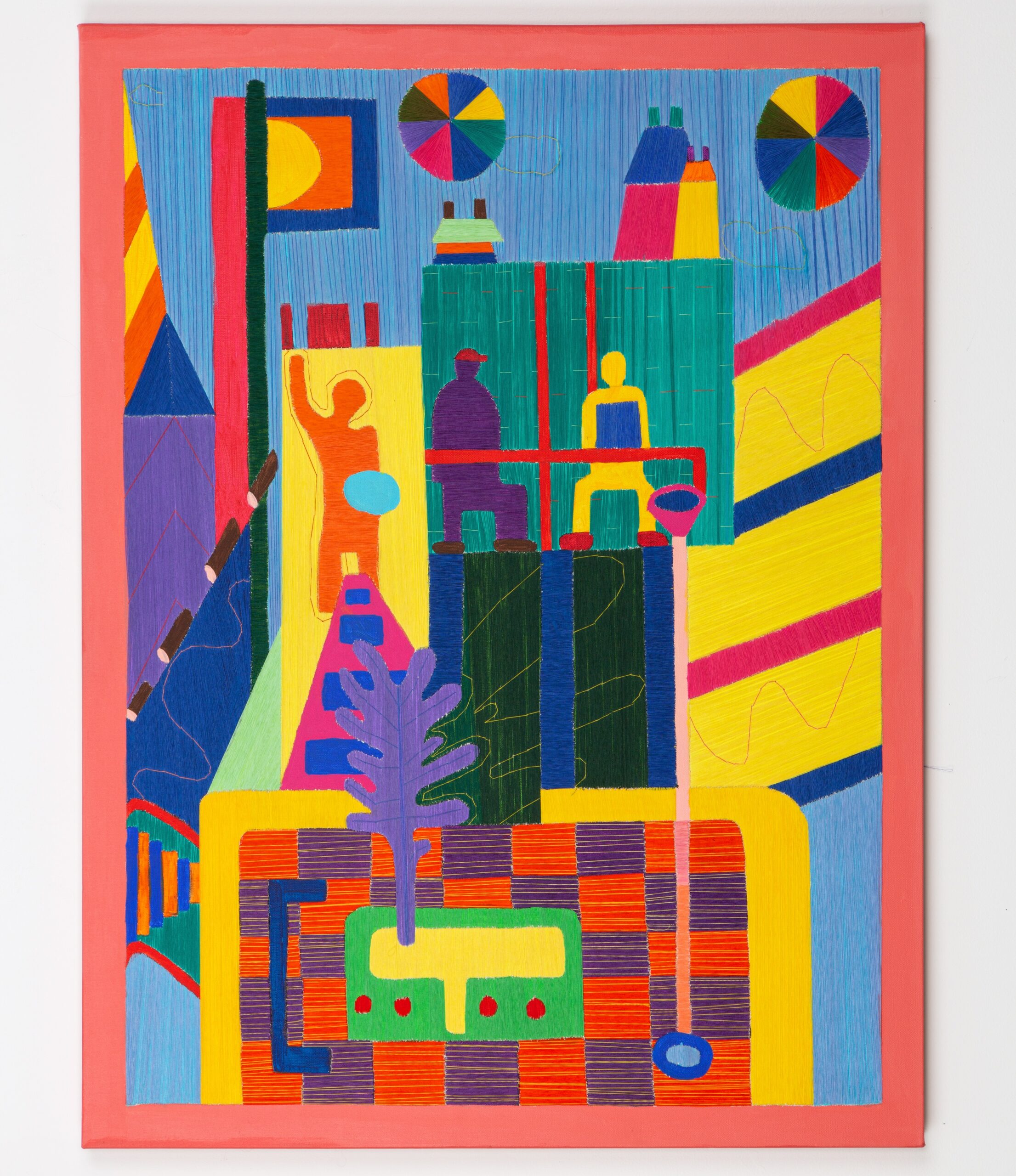
Can you speak about a work of yours, or by another artist, related to home that revealed something to you?
Fish Eye is a painting I made in which the setting is my bedroom. It is a self portrait of me looking in the mirror. Looking at myself in the mirror is a representation of looking at my past, my memories that shaped me into the woman I am. When I look at myself, I am seeing my childhood home (which is painted within the mirror). I believe our memories have a tremendous amount of influence on who we are. What we like or fear is based on our memories. Yet how reliable is our memory? We forget certain things while we remember others, we can even create a memory that never existed and trick our mind into thinking that it is real. Hence the title “fish eye,” in comparison to the short memory fish have. The left side of the painting is a shelf of items that have importance in my life. To briefly conclude, the painting depicts the effects of memories, and the influence they bring to who we are, which then is reflected in the space that we live in. Our home is a reflection of who we are. Our memories, housed by our bodies, are also a reflection of who we are.
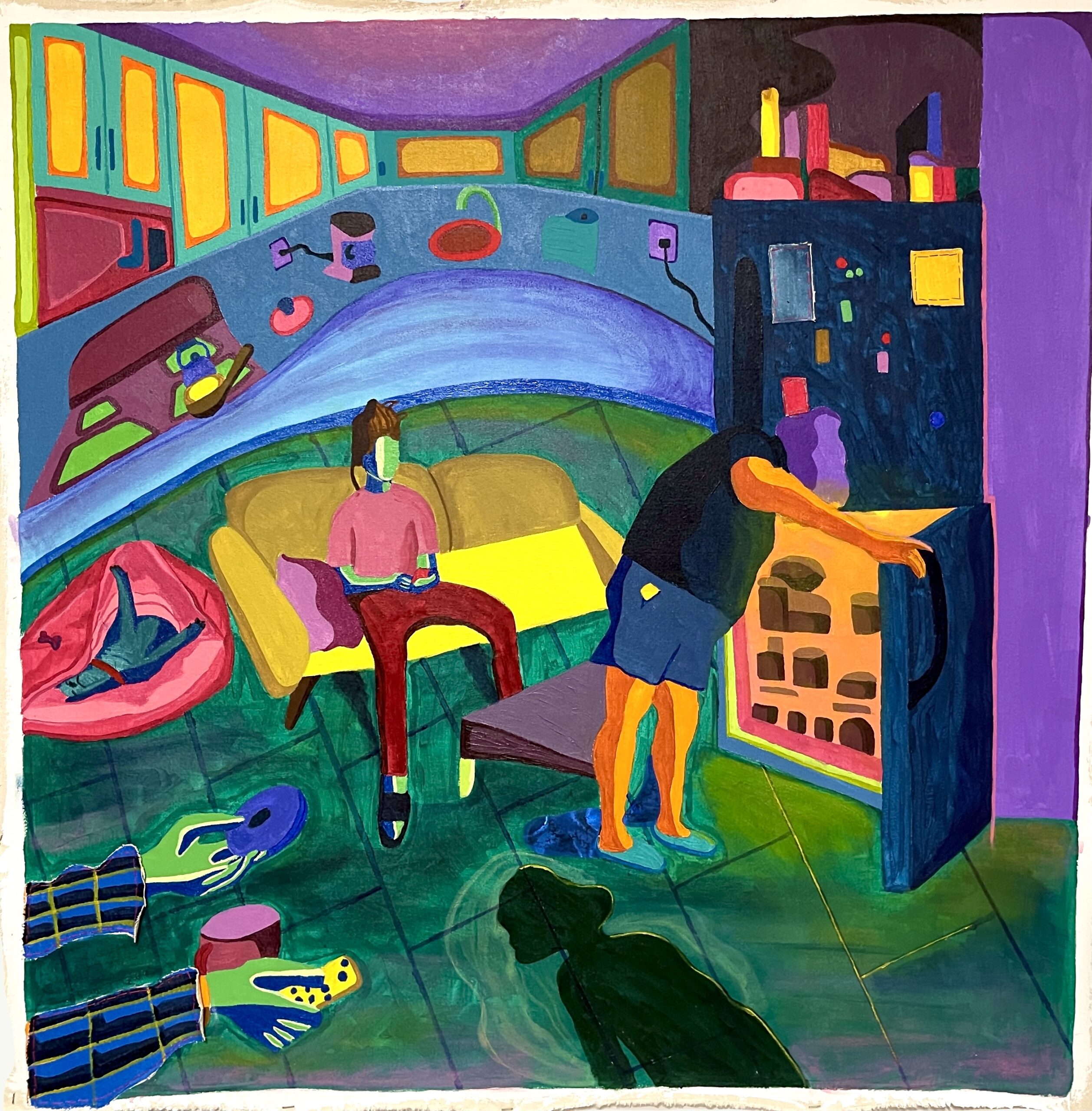
How have your perceptions of home changed over time?
Being an immigrant (I moved to America with my family from Ethiopia in 2008), my concept of home changed gradually. The social life I grew up with in Ethiopia allowed me to define home as my entire neighborhood. The idea of my neighbor’s house being open at any time for me to walk in, as if it is my own space, gave me the idea that home is not a personal space but rather a shared space. The warm social life was what home was all about for me. After moving to America, I realized here that home is a very personal space. Closing and locking a space meant dividing myself away from the rest of the world, and that became a new definition of home for me, although it took time to adjust.
What do you hope the viewer will take away from the work highlighted here?
In all of the three paintings we see a body of people embodied in a certain space. It is a reminder of our existence. It is about shaping and reshaping our surroundings. It is interacting with the area we are in. It is about time and things that are in progress.
Bethanya Abebe (Addis Ababa, Ethiopia, 1994) moved to the US in 2008 and went on to obtain a BFA at the University of North Texas in 2018. She enrolled at Pratt Institute and completed her MFA in Fine Arts in May 2021. She presently resides in Brooklyn, New York. Through her colorful palette, she captures her daily life encounters and moments while working primarily in acrylic on canvas. She is interested in capturing the everyday moments that are often overlooked as well as reflecting on her own life and emotions. After being introduced to fiber during her undergrad days, Bethanya grew interested in embroidery, tufting, and faux fur, which she learned to intertwine with her paintings. She continuously works to push her boundaries and experiment growth in usage of materials.
A Feeling of Longing
Jaybe Lee, MFA Photography ’22
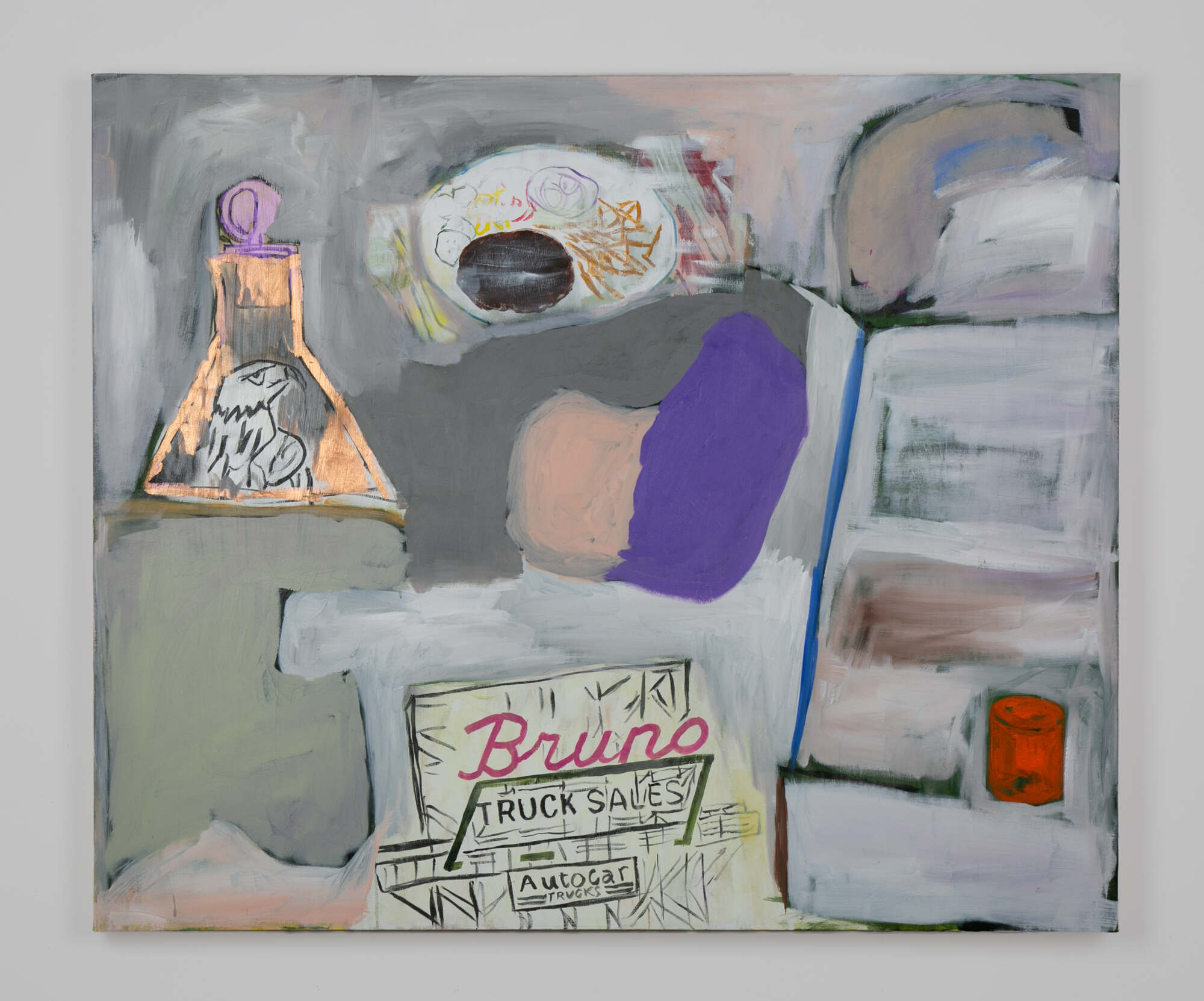
What is the significance of domestic space/home environments for you in your work? What has drawn you to these environments?
Because I moved around so much growing up, domestic spaces and homes were among the very few tools for me to understand my surroundings. This includes how things are placed, people, the structure of the buildings, the way people park their cars, and even how toilets are installed. It’s like when you adopt a puppy and the puppy sniffs around the house at first—that’s what I was doing with these spaces and homes.
I would try my absolute best to assimilate, but no matter how much I tried, I felt like I could never be part of these homes and spaces. There’s a disconnection between domestic spaces and myself, which I was trying to capture through my photography.
-
![A translucent white layer, number twos, and letter Zs in scattered positions painted over a photograph of a person floating in water]() Jaybe Lee, 2dddd2d2dd2222, 2022, acrylic on inkjet print, 31 x 44 inches. Courtesy of the artist
Jaybe Lee, 2dddd2d2dd2222, 2022, acrylic on inkjet print, 31 x 44 inches. Courtesy of the artist -
![A four-handed clock sits below abstract shapes resembling furniture and other domestic objects]() Jaybe Lee, Sorry, It’s time to go pick up my child, 2022, acrylic, charcoal, gouache on inkjet print, 31 x 44 inches. Courtesy of the artist
Jaybe Lee, Sorry, It’s time to go pick up my child, 2022, acrylic, charcoal, gouache on inkjet print, 31 x 44 inches. Courtesy of the artist
What are some sensations or ideas that define home—what do you imagine when you envision home—and how do those feelings or concepts relate to your approach to painting?
For me, the idea of home does not exist. I look at it as a feeling of longing, and this could extend toward the idea of home.
I was interested in the longing and its [relationship to] the human condition. My photography started as capturing domestic spaces and homes that I spent time with and eventually, this led me to start painting on top of my photographs. The paintings atop my photographs are taken from places I dare call home as well as those I’ve spent time in in isolation thinking about why we are all here.
Photographs of people, land, animals, and remains of tools—these were a way to connect with the people and land that felt like what I was dreaming about at an early age; Americana. These places and their expanded landscapes made me rewind and recover from all the struggles and pains of living in urban cities. While I was there, I was able to confront a somewhat more basic or essential order of questions relating to myself and my place and position in the world.
My paintings, both works on canvases and on photographs, all start with either projecting an image or looking at an image. I create these paintings to silhouette, to layer, and to obscure my past, current, and future experiences in America as a marginalized person who tried so hard to fit into American society, a person I barely recognized.
Because I’ve never learned how to paint (I started while I was in the MFA photography program at Pratt), I find beauty in not knowing the outcome of these paintings and how they transform and mutate during the process.
I had to shapeshift myself many times over my paintings to share the experiences I had to endure.
Can you speak about a work of yours, or by another artist, related to home that revealed something to you?
I can’t put it into words, but Justine Kurland’s This Train Is Bound for Glory project revealed a lot of this feeling [about home] that was in my head.
-
![Painting with ladder, outline of dog, and circle reading FATHER among colorful shapes in red, black, and green]() Jaybe Lee, When we move to a bigger house, perhaps then we can adopt a puppy, 2022, acrylic, charcoal, oil stick on Niyodo paper, 43 x 60 inches. Courtesy of the artist
Jaybe Lee, When we move to a bigger house, perhaps then we can adopt a puppy, 2022, acrylic, charcoal, oil stick on Niyodo paper, 43 x 60 inches. Courtesy of the artist -
![Black-and-white photograph of a person with short hair in black briefs and T-shirt standing back to the camera on a bed with a black cylinder protruding from between their legs]() Jaybe Lee, I am the biggest loser today but tomorrow I am dead so I win, 2021, silver gelatin print, 40 x 50 inches. Courtesy of the artist
Jaybe Lee, I am the biggest loser today but tomorrow I am dead so I win, 2021, silver gelatin print, 40 x 50 inches. Courtesy of the artist -
![Painting with ladder, outline of dog, and circle reading FATHER among colorful shapes in red, black, and green]() Jaybe Lee, Breakfast Champion, 2022, acrylic and gouache on inkjet print, 20 x 24 inches. Courtesy of the artist
Jaybe Lee, Breakfast Champion, 2022, acrylic and gouache on inkjet print, 20 x 24 inches. Courtesy of the artist
How have your perceptions of home changed over time?
I actually stopped thinking about physical home.
What do you hope the viewer will take away from the work highlighted here?
Once my work is out there in the world, I don’t want to think about how people view my work.
But, I spend equal amounts of time choosing titles for my work and creating them.
The titles are there to actually weave all my work together—so I hope the viewers can enjoy the titles as much as I do.
Jaybe Lee (Koln, Germany, 1988) received his MFA in photography from Pratt Institute and his BFA from University of Southern California. Recent exhibitions include the solo show Pain Is Just French for Bread at SOOT Tokyo (2022), which featured the works highlighted in this story. Lee writes: “I am an artist working with photography, painting, and sculpture to understand identity, home, place, alienation, and its relationship with myself and my vulnerability. This desire for knowledge grows from my biography: I am a Korean American man who was raised in 10 different locations on 3 different continents with shifting landscapes and parents both biological and adoptive. My body of work depicts a journey to find myself and understand the longing I feel. The iconography of travel and escape is evident in my pictures and draws from years of solitary exploration, stitching a narrative of self-journey through my work.”
Leaving the Nest
Salenia Sanchez, BFA Fine Arts ’21; MPS Art Therapy and Creativity Development ’23
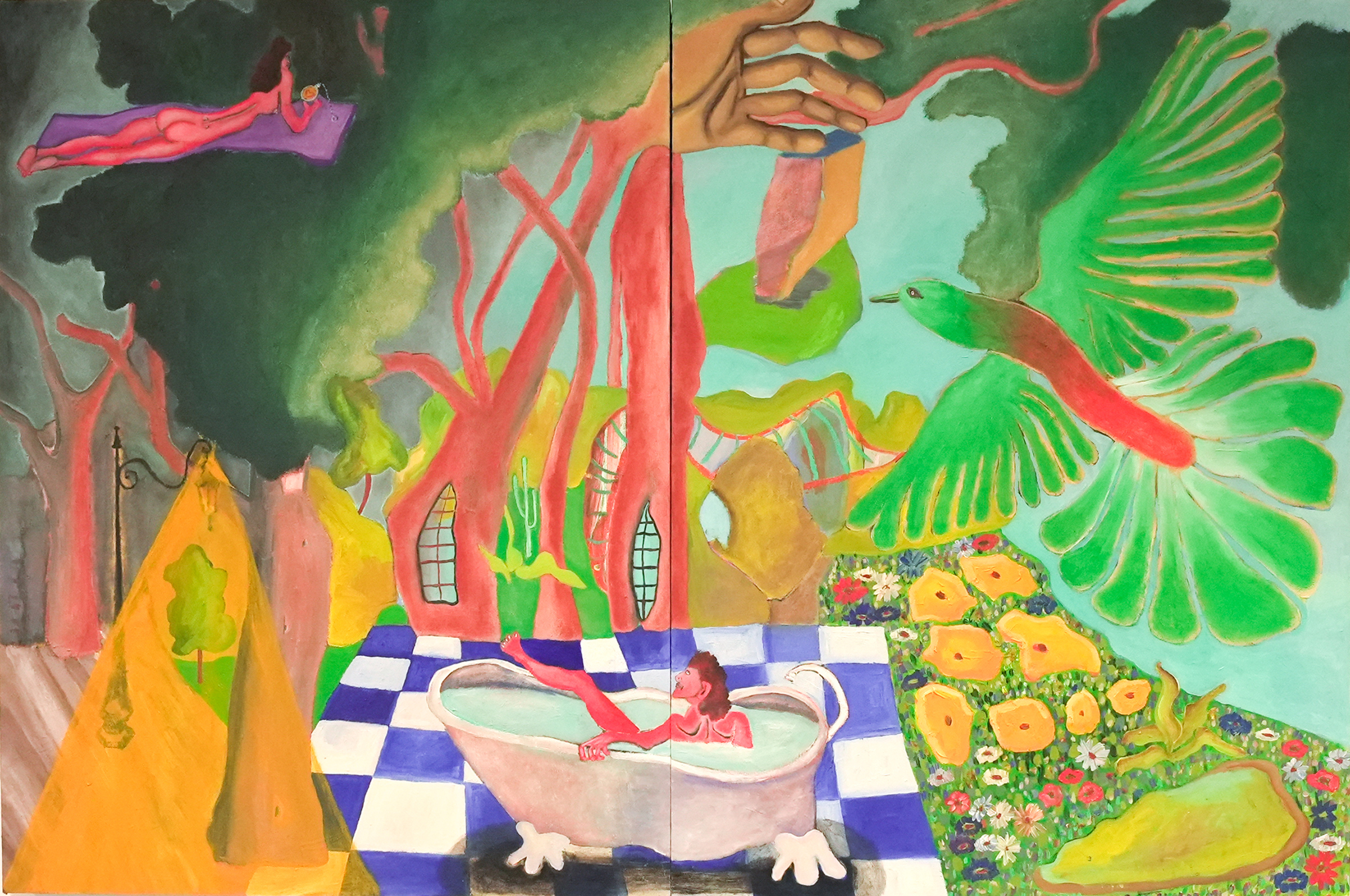
What is the significance of domestic space/home environments for you in your work? What has drawn you to these environments?
This is a temporary environment for me. My goal is to change or expand to new spaces and places. What has drawn me to these environments is getting back to my roots and finding my self-identity.
What are some sensations or ideas that define home—what do you imagine when you envision home?
What defines my home is cleanliness and organization. My home is calm and reflective. My space is expansive, with enough room to work with clients and an art studio for my paintings.
Can you speak about a work of yours, or by another artist, related to home that revealed something to you?
Just a Place in Time is a recent painting that reflects my new home in Brooklyn. What was revealed from this painting was freedom.
I transplanted from Tennessee to New York, where it feels like home. I’m the most comfortable I’ve ever been because of being surrounded by the organic diversities all around me. I am Puerto Rican, [but] I am adopted and was raised Italian. I am inspired by being in my Puerto Rican neighborhood with the music, and hearing my own native language, which I am still learning. Weaving these ideas and feelings into my work is ever-changing—the sights, sounds, and emotions between me and the canvas. [In] my painting Just a Place in Time, there was something more—[it was] my time to leave the nest, and fly free. Fly free to make errors and accomplishments.
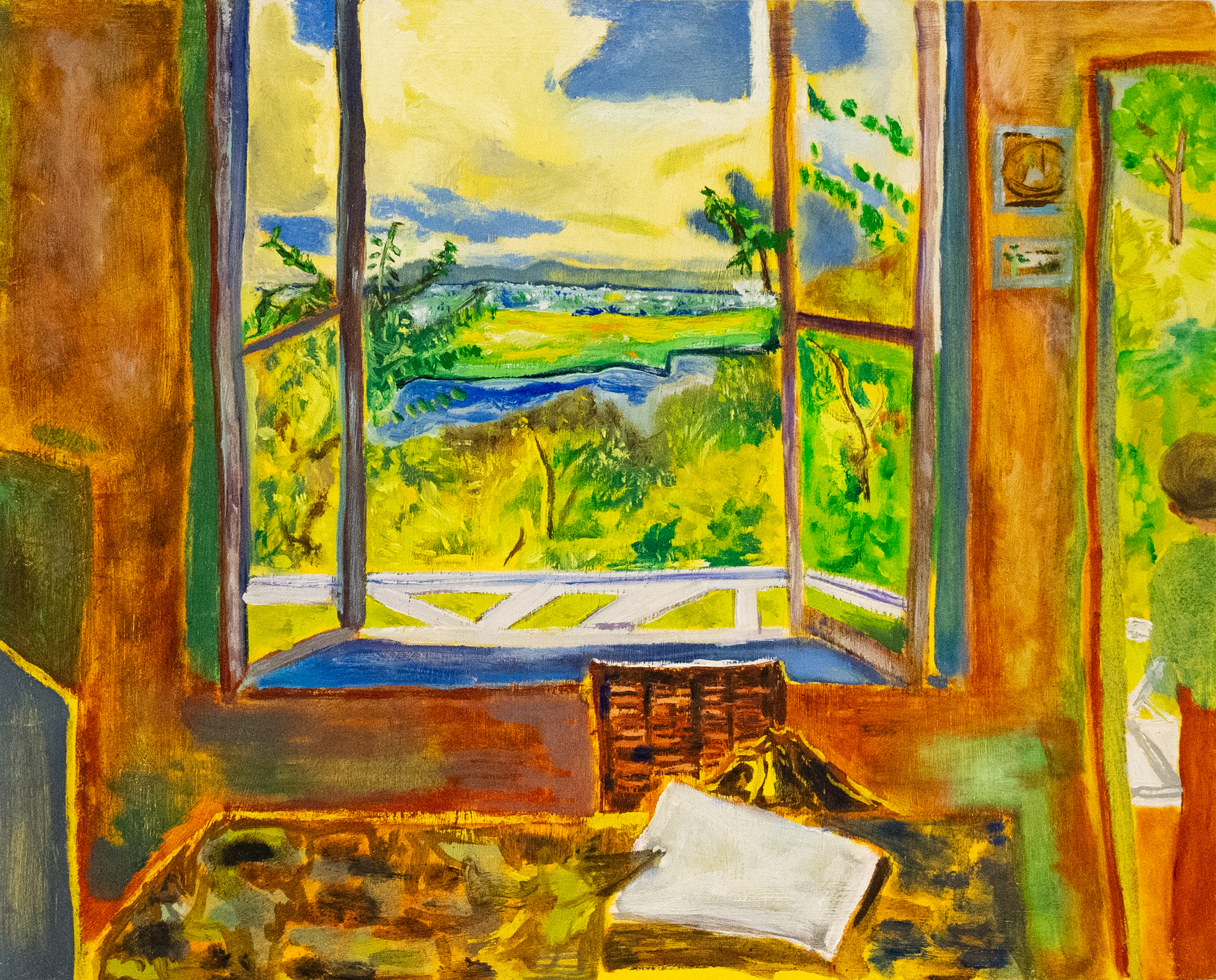
How have your perceptions of home changed over time?
Over time I have had to leave the security of my family and move states away. This was a big change from one home with security to just me all on my own.
What do you hope the viewer will take away from the work highlighted here?
Freedom and feelings of transition. I want the viewer to know there’s always a way out or solution.
Salenia Sanchez (New York, 1992) received her BFA in Fine Arts (Painting) from Pratt Institute in 2021 and her MPS in Art Therapy and Creativity Development from Pratt in 2023. She is a painter and working art therapist. Sanchez writes: “I explore the natural world and our ever-changing relationships with new places. My whimsical compositions make use of vibrant colors, textures, and figures to evoke my own emotional and physical journey navigating unfamiliar surroundings. My paintings require the viewers to both look at and discover. From moving around a lot in my life, I learned a deeper relationship to the natural world using and adding different shapes, textures, and colors. This challenge of adjustment and contemplation soon seeped into my work. My palette naturally evolved to express a more emotional and passionate truth and fear. Beginning with an empty space that argues love and lies, I developed these altered landscapes of introspective and celebratory experiences. Every piece of my paintings is a reflection of a fictive realm that dwells inside me. The disorganizations of these shapes found in my paintings are a confession of both my doubts and my solutions.”
Evolving Atmospheres
Polly Shindler, MFA Fine Arts (Painting) ’11
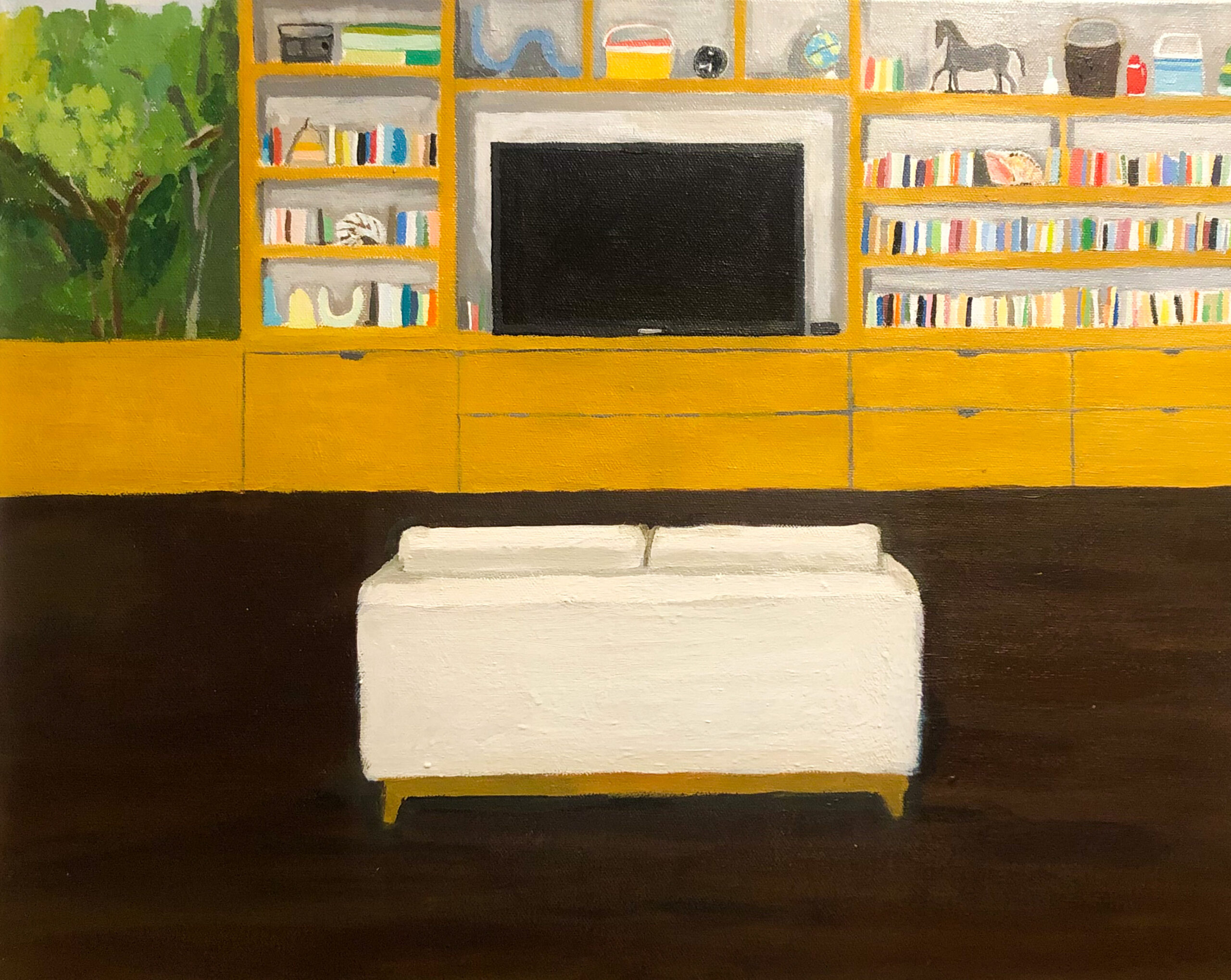
What is the significance of domestic space/home environments for you in your work? What has drawn you to these environments?
I’ve always been attracted to learning about how people live their lives and how they spend their days. I want to know what people’s homes look like, probably for both comparison and curiosity’s sake. I want to look at how my life differs from everyone else’s. I want to see the structure of a home itself: How was it built? What makes it cozy? Or modern? Why a ranch? Why an apartment? I like to see how people take care of their things. How they organize their personal effects and household. What they choose to put on the coffee table and what they don’t want you to see.
What are some sensations or ideas that define home—what do you imagine when you envision home—and how do those feelings or concepts relate to your approach to painting?
I love the idiosyncrasies of a place, a room, a bed. I pay attention to the textures, colors, and appointments, the choices made by its inhabitants. I appreciate specificity, collections, the things that might define the people using the space. The outward appearance and facade of the home is also interesting to me. Are the people’s cars in the driveway? On the street? In their garage? Do they have a garden? How a house is presented to the world with its landscaping, window treatments, can express how open or closed it wants to be to the world.
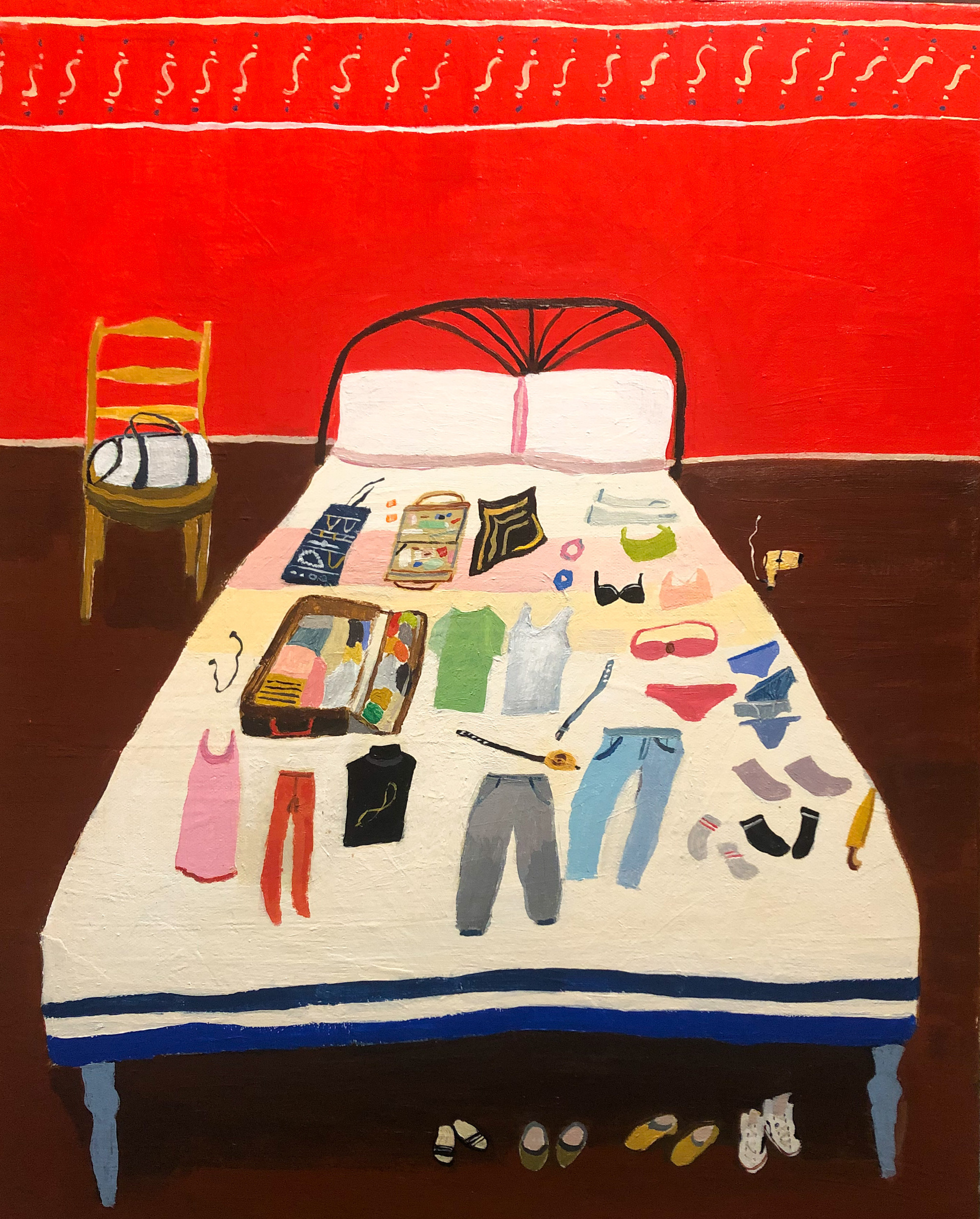
Can you speak about a work of yours, or by another artist, related to home that revealed something to you?
The Yellow Shawl by Pierre Bonnard, circa 1925, is a painting I come back to over and over. It’s part of the permanent collection at the Yale Art Gallery. I’ve spent a lot of time trying to figure out how he created such action and story in one still image. The fabrics are in motion, the table is covered with activated objects, the figures are dynamic. While I don’t much paint the figure, I am inspired to when I look at this painting. The figures are more than people; they are as fundamental to the home as the walls and cabinets.
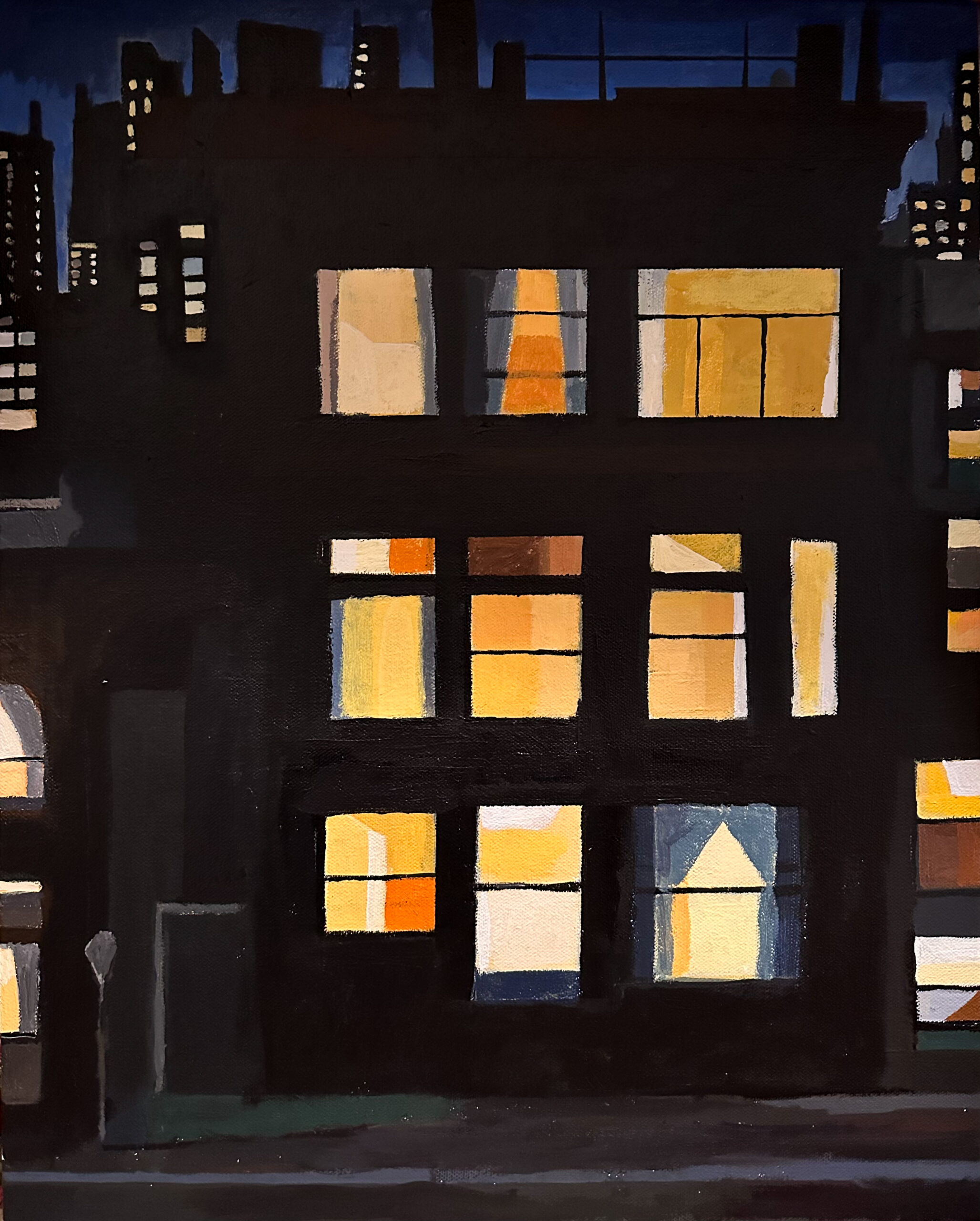
How have your perceptions of home changed over time?
In the past, I don’t think I nested. I never viewed the home as a whole. I didn’t really take care in the design or flow of my living space. Over the past few years, especially while spending a lot of time at home due to COVID, I learned how to sew, quilt, bake, cook, and grow flowers. I moved fairly recently, and in my new home, I wanted to showcase these new skills. I wanted to pay attention to where I’d like to put my body and areas I’d like to spend the most time. Corners I could perch in where I could do my best thinking or not thinking. I wanted this home to be soft, with comfortable blankets, DIY custom curtains. A place that would be both stimulating and soothing as needs arise.
What do you hope the viewer will take away from the work highlighted here?
Many of my paintings are of interiors, such as TV Room with White Sofa, 2023, and Packing for Vacation, 2022. They showcase collections over time and the things we cannot live (or travel) without. With Lights on in an Apartment Building, 2023, I wanted to render another side of the home. I’ve now done several pieces that depict houses and apartment buildings from the outside either during the night or very early in the morning. I wanted to look at how a home appeared at rest in the darkness. I was taken by both the quiet activity within and the contrast of color, the warmth of the rooms against a blue-black sky. I hope my paintings present the evolving atmosphere of homes, considering day against night, indoor against outdoor, summer against winter. I hope they illustrate my interest in the constant movement of life.
Polly Shindler (New Haven, 1977) received her MFA in painting from Pratt Institute and her BA in history from University of Massachusetts. She has shown throughout the US as well as internationally at Rafael Pérez Hernando Gallery in Madrid and Cristea Roberts Gallery in London. Upcoming projects include the NADA Art Fair in Miami with Deanna Evans Projects and a residency at Yaddo early next year. Recent solo and two-person shows are Shifting Perspective at Deanna Evans in New York City; As Safe As Houses at Jennifer Terzian Gallery in Litchfield, Connecticut; and Home Bird at Troutbeck in Amenia, New York. Recent group shows include Flower Shop at Smoke the Moon in Santa Fe; Summer in the City at Hashimoto Gallery, New York City; and an online Platform exhibition in partnership with David Zwirner with Gisela Projects.
Previous solo shows include Time Management at Freight + Volume; Retreat, at Ortega y Gasset Projects; and at the project space Tennis Elbow at The Journal Gallery, New York City. Art Fairs include SP-Arte representing Gisela Projects, São Paulo; Art Estampa representing Rafael Pérez Hernando Gallery, Madrid; and Art on Paper Fair representing 3 Walls, New York City. Her painting Green Rocking Chair shown in Still Lives, a group show at Underdonk in Brooklyn, was featured in “Goings on About Town” in The New Yorker in September 2018. She was granted a yearlong curatorial residency at Trestle Projects in 2015. Shindler has attended residencies at Vermont Studio Center, 2013, the Wassaic Project, 2020 and 2022, and Provincetown for the DNA Residency in 2021. Two of her paintings were covers of published novels, Early Morning Riser by Katherine Heiny and A Likely Story by Leigh McMullan Abramson. She lives in Millerton, New York, in the Hudson Valley with her dog, Owen.
